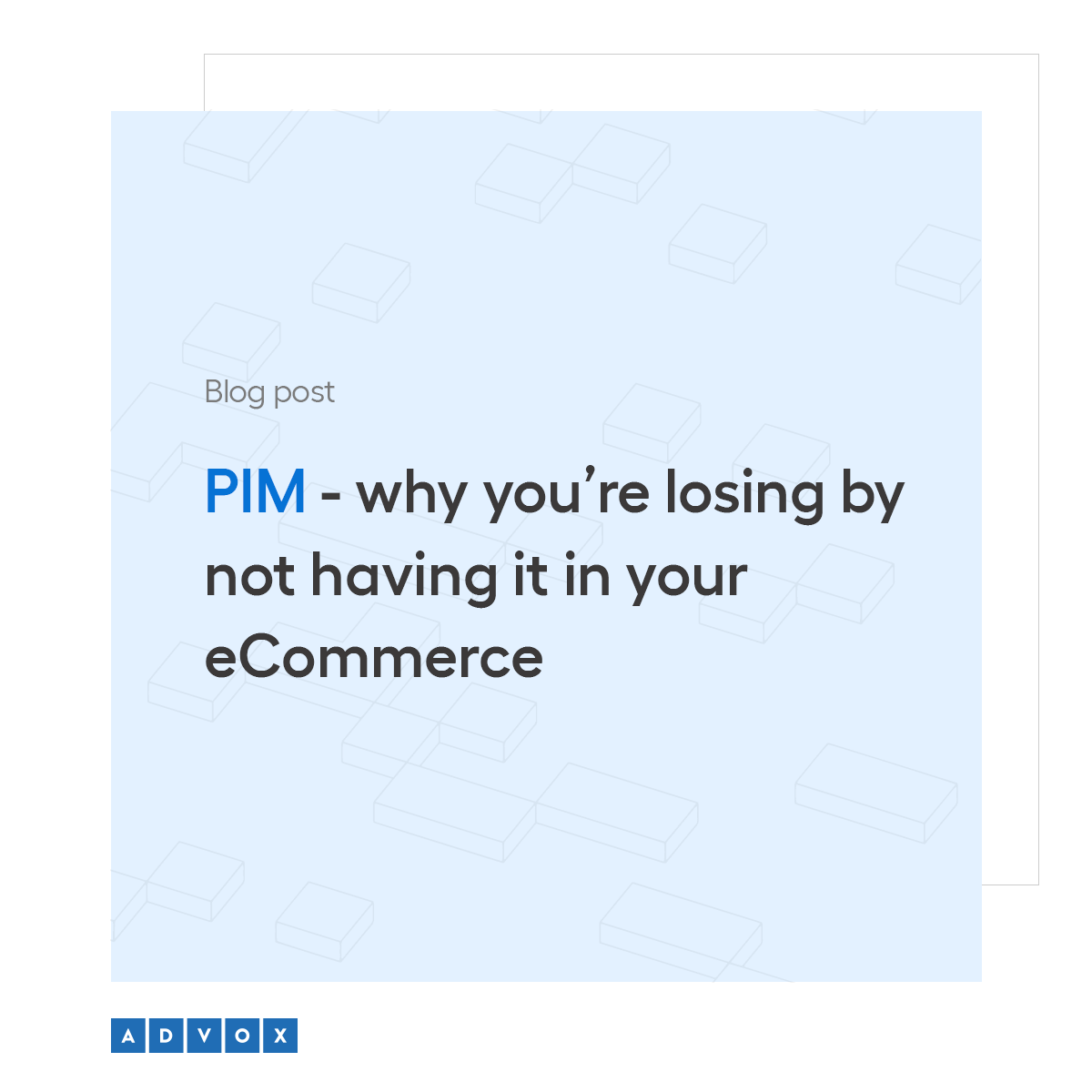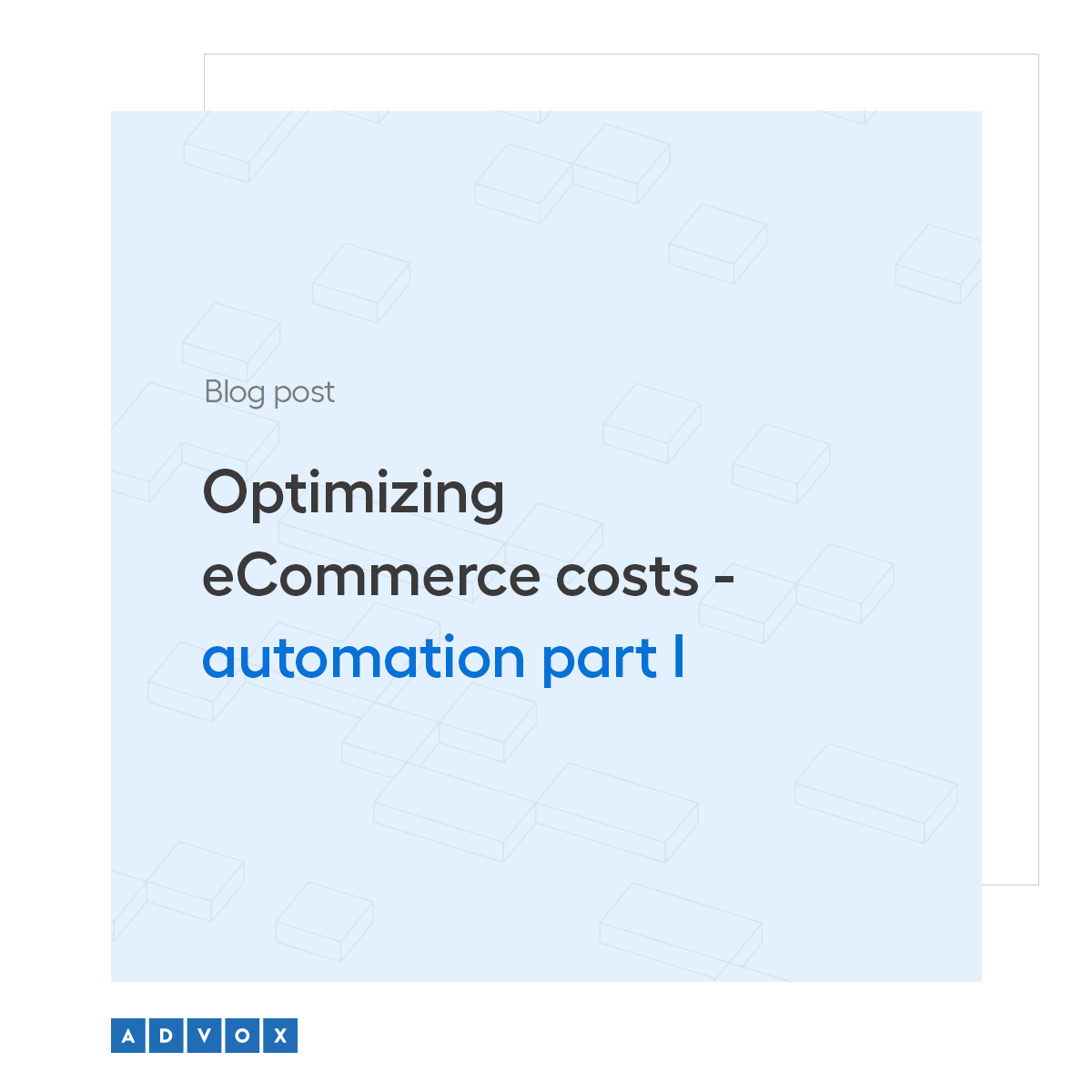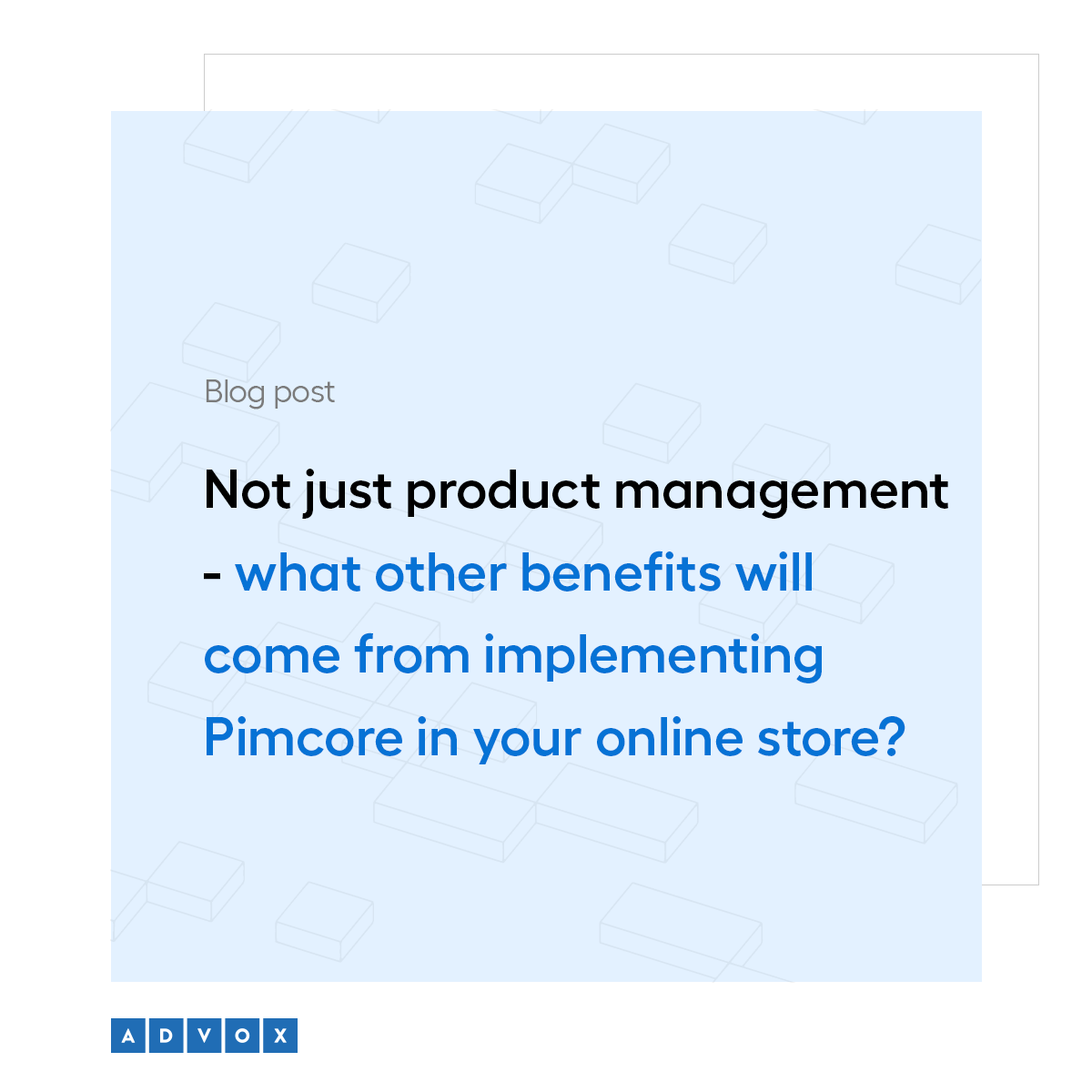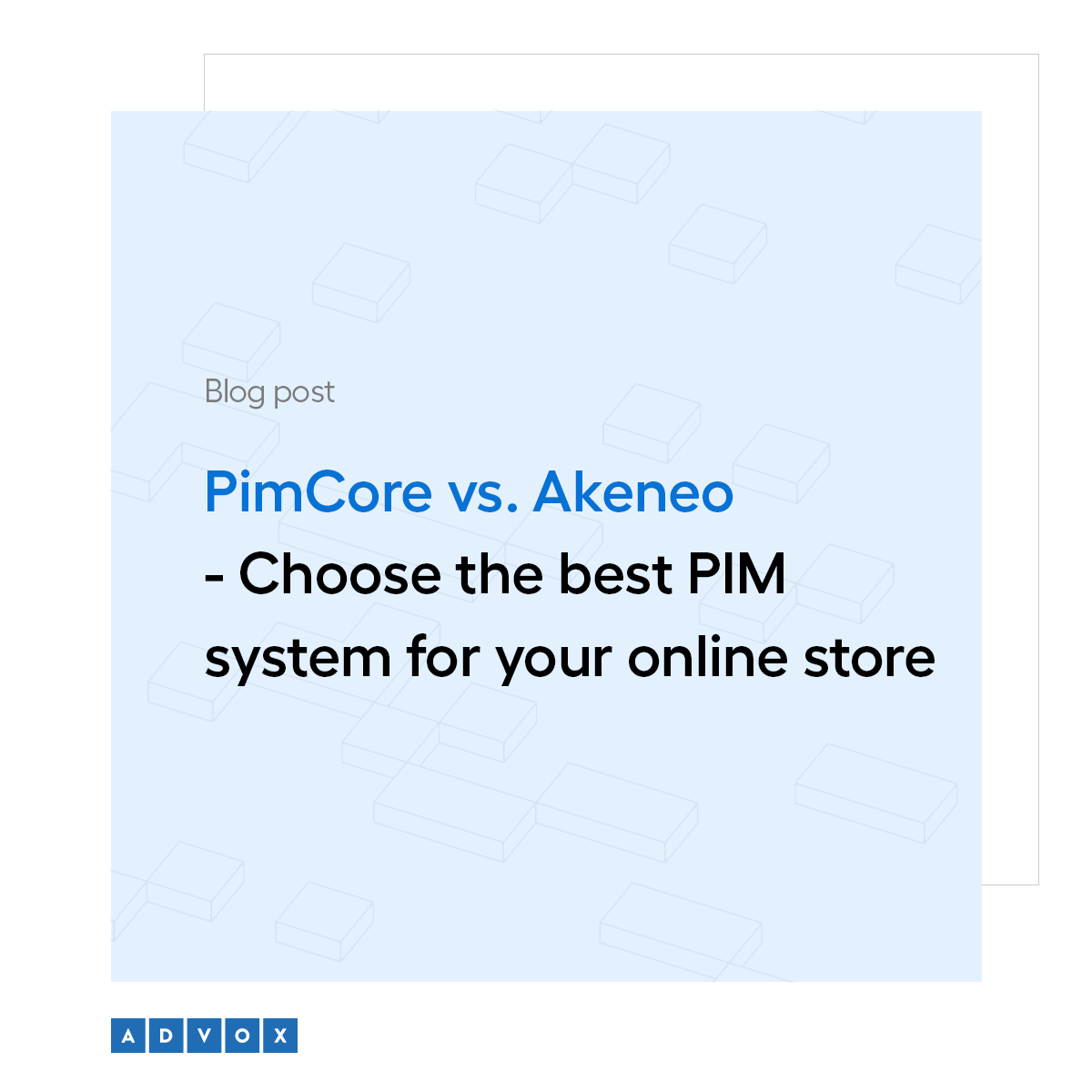How to manage a growing product catalogue in your online store (and why a PIM system is worth considering)?
Table of contents:
- What challenges might you face when managing products in an online store?
- A rescue for informational chaos? Product management with the help of a PIM system
- How to choose the right PIM system for your online store?
- Pimcore - a system that offers far more than just product management
- Is a PIM system a necessity?
From 500 to several thousand - that’s typically the number of products offered by a mid-sized online store. This number often grows as the store expands, the brand strengthens, and new markets (increasingly international ones) are explored. It’s a great sign - after all, more traffic means more orders. However, a growing product range also brings greater challenges in managing the entire inventory.
Every additional product not only increases sales potential but also adds more work in updating descriptions, tailoring content for different sales channels, and even translating information into foreign languages (for international sales). Without the right technological support, it’s easy to make mistakes, which can result in outdated product data, missed orders, or incorrect pricing. This, in turn, can cause your business to lose efficiency.
Manually entering and updating data is a time-consuming process that can tie up resources that could be better used for strategic initiatives. As a result, instead of growing dynamically, your business may start to lose momentum and fall behind competitors. How can you ensure the necessary support? By implementing a PIM (Product Information Management) system, which is the focus of this article. Read on to learn more!
What challenges might you face when managing products in an online store?
A product in an online store is the centrepiece of every transaction, but managing it isn’t always simple. eCommerce owners often struggle with the chaos of gathering, updating, and organising product data. Issues like inconsistent descriptions, missing images, or incorrect attributes can lead to customer frustration, reduce brand trust, and ultimately — decrease profits. But product information disarray is just the tip of the iceberg when it comes to product management challenges. What other difficulties might you face?
- Maintaining data consistency across channels - omnichannel has become the standard. For this reason, it’s essential to keep consistent and up-to-date information not only on the eCommerce platform but also across other sales channels (such as marketplaces, mobile apps, or social media stores). Inconsistent information, like varying prices for the same product, can cause not only customer confusion but also real financial losses for the business.
- Adapting content for local and international markets - stores operating both in their country and internationally must ensure their content aligns with local preferences, languages, and sometimes even regulations (for example, food labelling laws can vary by region). A lack of a coherent strategy for a specific location can result in mismatched offerings and reduced sales in that region.
- SEO content optimization - product descriptions that aren’t properly optimised for search engines can significantly lower the store’s visibility in organic search results. Failure to update and optimise content affects not only positioning but also website traffic, ultimately leading to lower conversion rates.
- Managing content specialists’ work - coordinating the efforts of the team responsible for creating and updating product descriptions requires a clear division of tasks. Poor permissions management can lead to unintended changes or data loss, as well as increase the risk of errors or delays.
- Platform load with a growing product catalogue - as the product range expands, stores often face difficulties in managing the increasing amount of product data. Without the right data format and optimization, an excess of information can overload the system, slowing it down. Poorly prepared images, large multimedia files, or inefficient data structures result in longer page load times, negatively impacting the user experience.
A rescue for informational chaos? Product management with the help of a PIM system
As you can see, a product catalogue in an online store is, in reality, an extensive set of information that you not only need to store securely but also keep constantly updated. Effective product management requires controlling many different types of data at once - from technical specifications to marketing descriptions to logistics information and pricing. That’s why, especially if your offerings frequently change or you plan to expand them in the future (a natural growth phase for most online stores), it’s worth considering implementing a PIM (Product Information Management) system. What exactly characterises this kind of solution?
A PIM system enables centralized management of all product data in one place. This ensures that every team member is working with up-to-date data, and any changes are automatically applied across all sales channels. This not only saves time but also eliminates errors resulting from manual data entry across different systems.
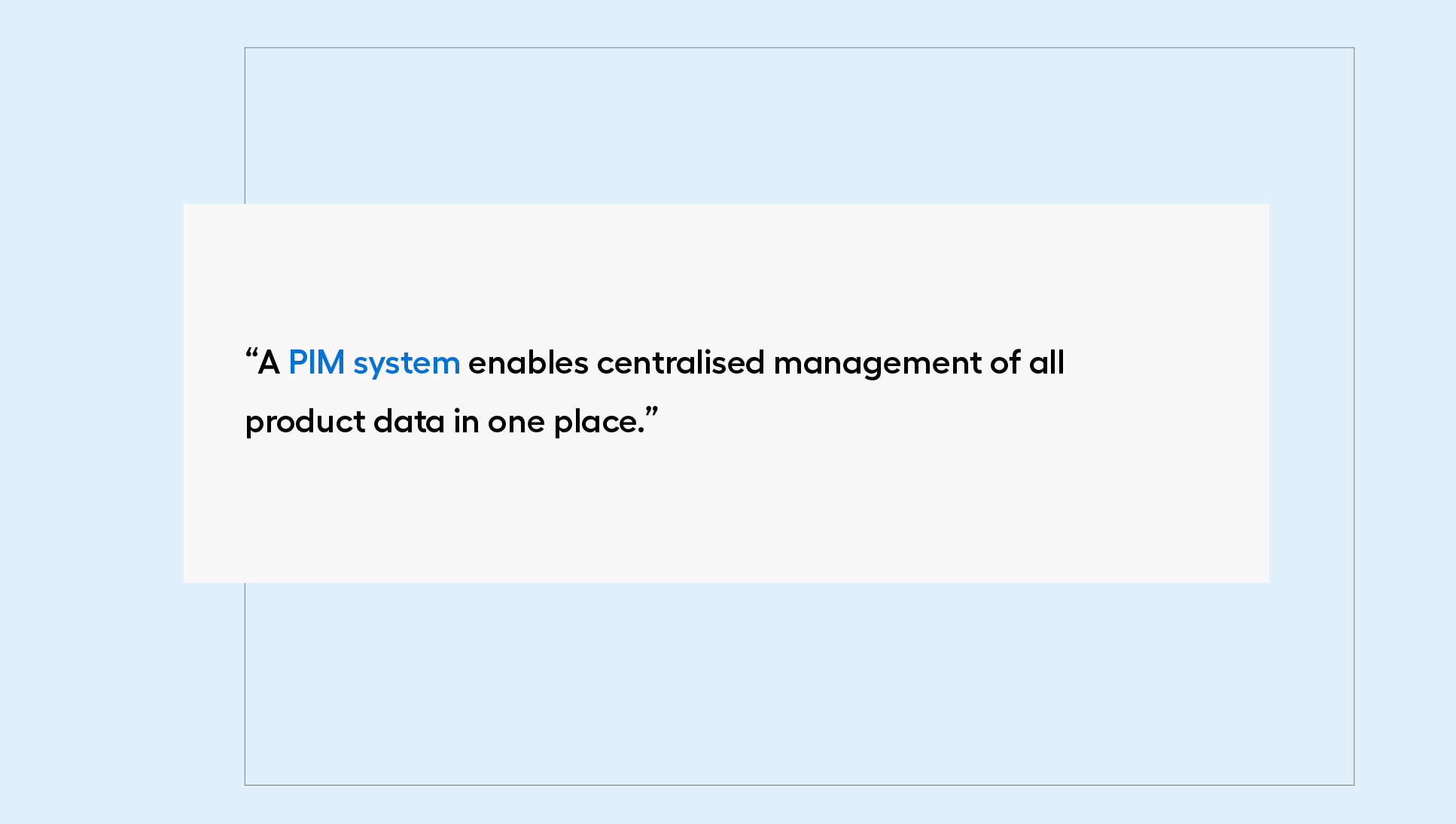
In short, using a PIM system helps maintain order in product information and streamlines updating processes, which is especially crucial for large e-stores with thousands of products. Data centralization makes it easier to implement changes, expand the product range, and prepare for seasonal promotions or rapid business scaling. With PIM, all information is consistent and accessible in one location, greatly improving operational efficiency and enhancing the customer experience.
How to choose the right PIM system for your online store?
Just like selecting an eCommerce platform, deciding on the right PIM (Product Information Management) system requires careful consideration and analysis — after all, it’s a solution that will support your business for years to come. A PIM system should be flexible, efficient, and capable of growing alongside your business. So, how can you ensure that you choose the right PIM system among the many options available on the market?
Similar to selecting the engine for your online store, you need to take various factors into account. The final choice will depend on aspects such as the size of your product range, the number of team members involved in content management, and whether you operate solely in your country or also in international markets. Additionally, your development plans, budget, and the time you can allocate for implementation will all play a significant role.
There are numerous PIM solutions on the market with a wide range of functionalities and flexibility. To make the choice easier, it’s worth focusing on key factors that could be decisive:
- software type (open source or SaaS) - open-source models offer full control over the code and flexibility to customise the tool according to your needs. On the other hand, SaaS (Software as a Service) solutions are ready-made tools that you typically gain access to after paying for a licence, allowing for quicker implementation. However, keep in mind that SaaS functionalities may be limited to a predefined set.
- licensing model (free or paid) - The decision between a free or paid PIM version depends on your available resources and the needs of your store. Free versions can be sufficient for smaller businesses, but paid solutions often provide additional features, dedicated technical support, and regular updates, which can be crucial as your store grows and becomes more complex. However, it’s worth noting that open-source solutions are often available for free and can offer functionalities comparable to paid versions. Keep in mind that implementing such solutions requires the involvement of specialists and time to tailor them to your business needs, which may come with additional costs and technical challenges (but it eliminates monthly license fees).
- integration with existing systems - when choosing a PIM system, you should also consider its scalability as your business grows. The system should be flexible enough to integrate seamlessly with other tools you already use and support multichannel sales without compromising data consistency.
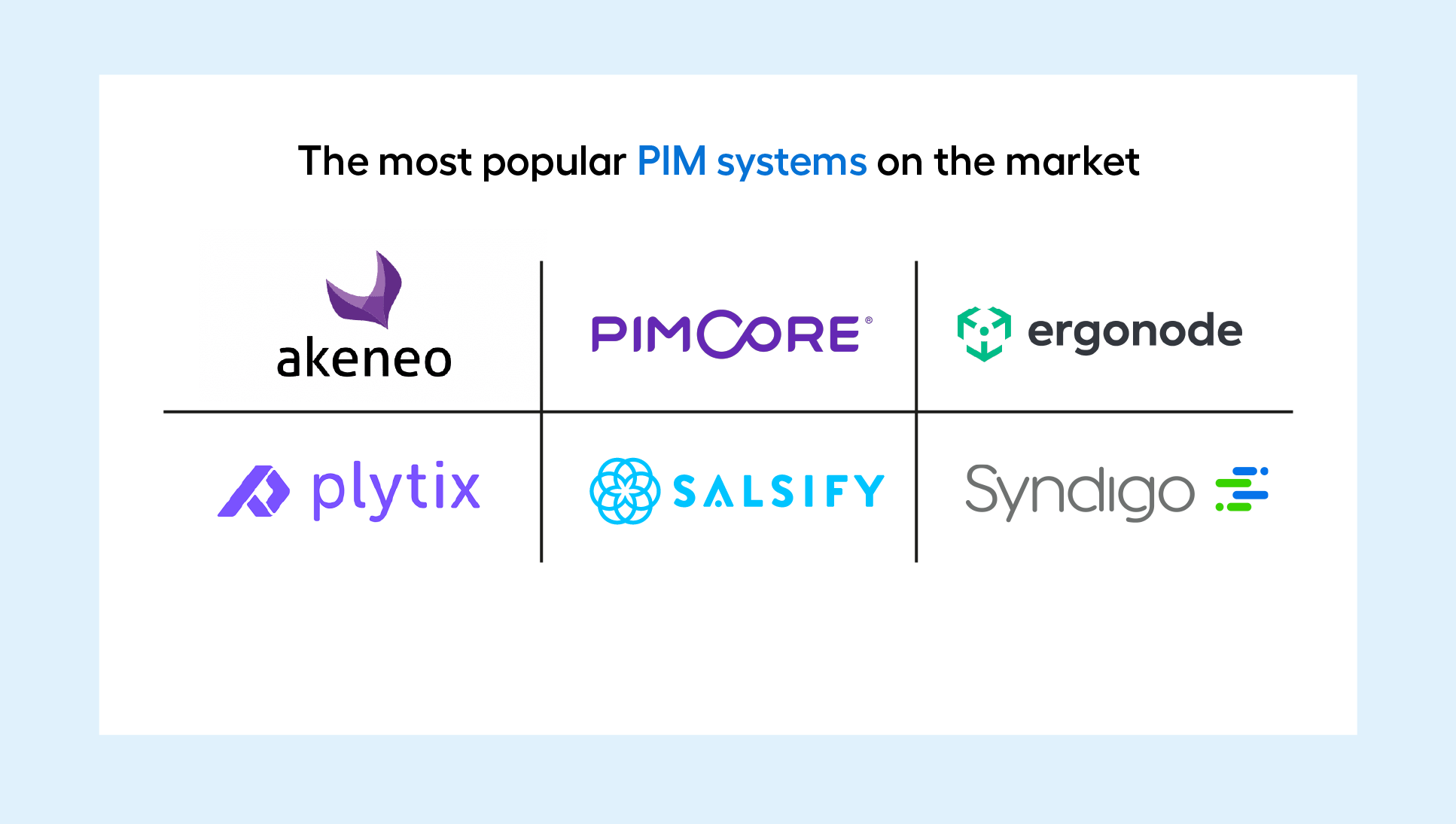
Pimcore - a system that offers far more than just product management
If you're considering which system to choose, Pimcore should be at the top of your list. Why? Because it goes far beyond the traditional capabilities of PIM systems. In addition to advanced product management, Pimcore offers a wide range of features that streamline business processes and enhance market competitiveness. By opting for this system, you gain several benefits, the most notable of which include:
- Automation of business processes - Pimcore allows for the automation of various processes, such as product data updates (e.g., correcting a description updates it across all sales channels with a single click) and report generation, saving time and increasing work efficiency.
- Support for multiple sales channels - the system enables management of sales across various online channels like marketplaces and mobile apps, as well as offline channels, allowing for a cohesive omnichannel strategy.
- Custom features development - Pimcore offers the flexibility to customise the system to meet specific company needs by creating dedicated functionalities that support unique business processes. Additionally, the system seamlessly integrates with new technologies, such as artificial intelligence, enabling even more efficient solutions (e.g., generating product descriptions using prompts).
- Storage of various file types - beyond product images and descriptions, the system efficiently manages a wide range of digital assets, such as videos, documents, and audio files, making them easier to utilise in marketing and sales campaigns.
- Support for international markets - Pimcore makes managing sales in different international markets easier (e.g., automated description creation, assigning different price variants based on the market), facilitating expansion and adapting offerings to local requirements and customer preferences.
- Flexible access management - the system allows for assigning access to specific features and resources based on employee roles and responsibilities, increasing data security and streamlining team collaboration.
The flexibility and broad customization options make Pimcore adaptable to the specific needs of any business, regardless of its size or industry. With the ability to define custom functions, manage access, and integrate with new technologies, Pimcore is a tool that, when properly managed, will evolve alongside your business. In short — by choosing Pimcore, you are investing in a platform that grows with you, enabling rapid adaptation to market changes and effectively leveraging growth opportunities.
Is a PIM system a necessity?
Of course, you can manage your products in your online store using basic tools like traditional spreadsheets. However, you need to be aware that as your business grows, manually entering data, maintaining consistency across various sales channels, and synchronising product information become increasingly difficult to manage. In short - the risk of errors will rise, and the efficiency of your e-store will decline. A PIM system helps prevent this scenario.
PIM allows you to centrally manage all product data, ensuring consistency across different sales channels. This saves you time, eliminates errors, and boosts efficiency - preparing your store for further growth. Wondering where to start with implementing such a system? Contact us — we’ll help you choose the best PIM system for your business and guide you through the entire implementation process, so you can start reaping the benefits of a PIM system tailored to your specific business needs as quickly as possible!
